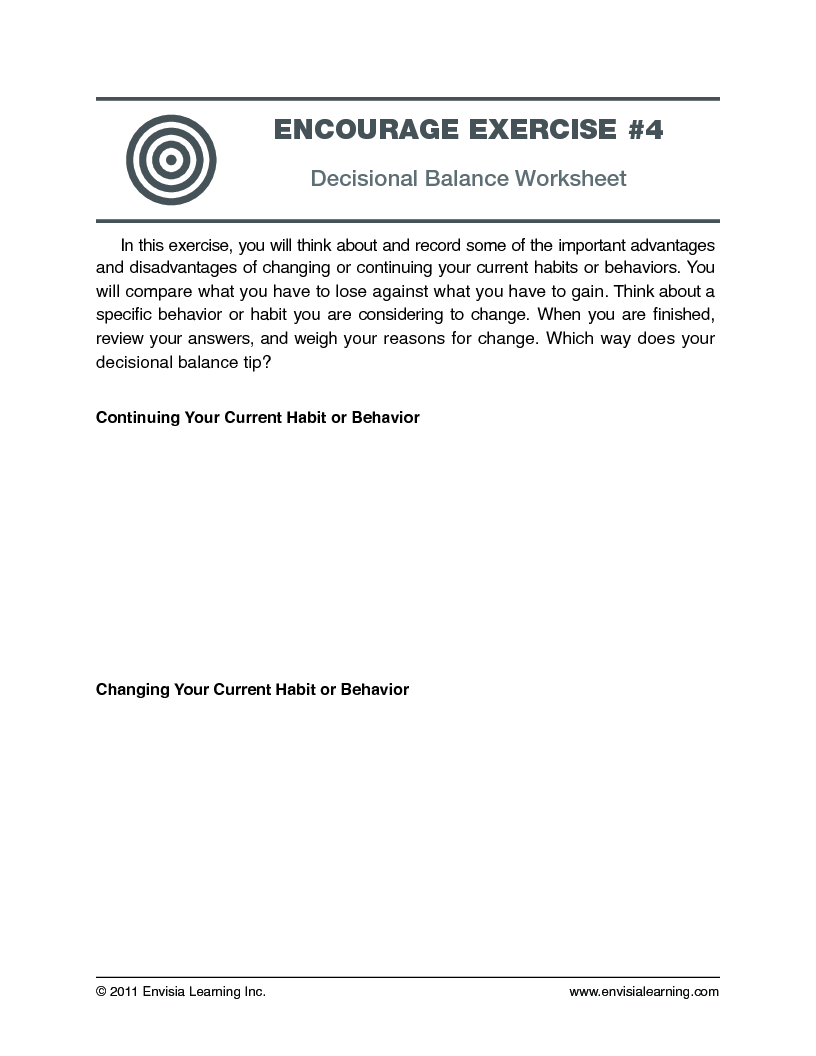
This free exercise, and dozens of others, were created for our book, Clueless: Coaching People Who Just Don’t Get It. You can learn more about Clueless by visiting our site or you can buy it from amazon.com today.
Purpose of Exercise:Â Guide clients to explore the advantages and disadvantages of changing specific habits
How to Administer and Use this Exercise to Facilitate Behavior Change: The New Year has just arrived and it is that time many people have made resolutions and/or are seeking out some changes for the upcoming year. Unfortunately, often times, many of those people that make resolutions and act on them find themselves losing motivation and slipping back to old habits. Â In fact, research has shown the following tendencies that people have when making their New Years goals:
Nearly four out of 10 adults will make one or more resolutions for the new year, according to a study done by the University of Scranton.
- After the first week of carrying out the goal, about 75 percent of people maintain their goal.
- After week two, nearly 70 percent of people will maintain their goal.
- After one month, about 64 percent will stick with their resolution.
- After six months, about 46 percent of people are still on track with their goal
For this reason, it is essential to regularly assess motivation levels and ensure proper motivation before committing to deliberate practice of a goal that may or may not be achievable. This exercise allows you to decide whether or not to make a change by weighing out the advantages and disadvantages in doing so.
